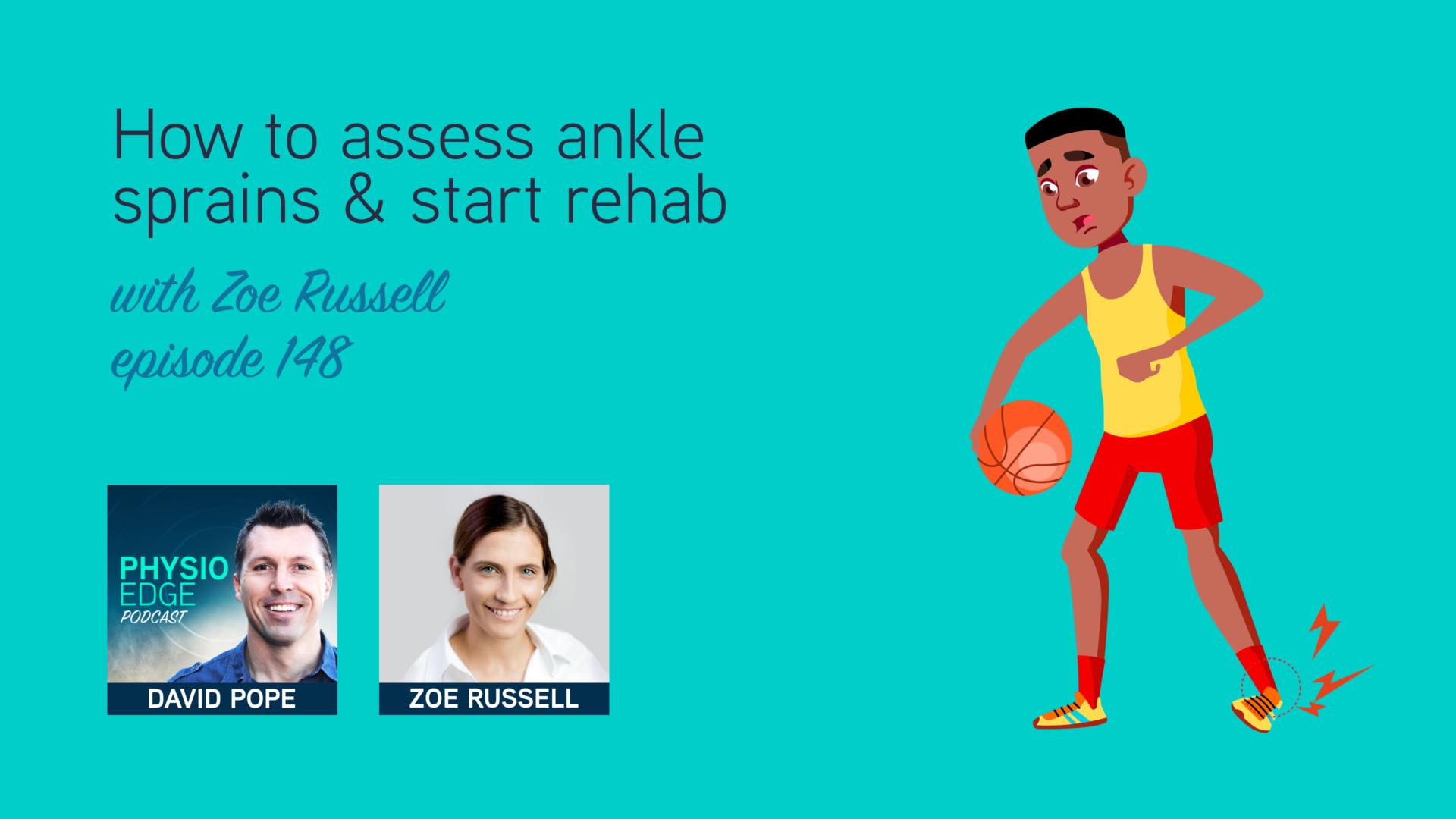148. How to assess ankle sprains & start rehab with Zoe Russell
Description

Untreated or poorly rehabilitated ankle sprains can develop into chronic ankle instability (CAI), osteoarthritis, or other lower limb injuries (Bestwick-Stevenson et al. 2021; Delco et al., 2017; Herzog et al., 2019; van Ochten et al., 2017).
In this podcast Zoe Russell discusses ankle sprain assessment and treatment, and how to return your patients to sport. You’ll discover how to help your ankle sprain patients fully recover as quickly as possible, and avoid long term ankle issues.
Zoe is a Specialist Sports Physiotherapist (FACP), APA Titled Musculoskeletal and Sports Physio, as well as a Clinical Edge Senior Educator and Presenter, and in this Physio Edge podcast hosted by David Pope, we discuss the latest evidence and practical treatment strategies for ankle sprains, including:
Assessment
- Common issues therapists face when rehabilitating ankle sprain patients.
- Questions you need to ask your ankle sprain patients.
- How a previous history of ankle sprains impacts your assessment & treatment.
- Why patients with inversion injuries may have medial ankle pain.
- How to avoid stirring up patients pain during your assessment.
Diagnosis
- Common mechanisms of injury, and how this guides your diagnosis.
- Structures that are likely to be injured with different ankle injuries.
Treatment
- 10 key elements to include in your assessment & treatment.
- How to help reduce swelling quickly after an ankle sprain, and why this is important.
- Immediate sideline management for ankle sprains at sporting events.
- Whether manual therapy has a role in acute ankle injuries or persistent ankle pain and swelling.
- How to explain ankle sprains, recovery & rehab to your patient.
- What you’re looking to achieve with your early rehab.
- How to set rehab targets or goals with your patients.
- The role of taping in ankle rehab.
- Taping compared to bracing.
- Whether long term taping or bracing is a useful long term injury prevention strategy.
- The latest surgical procedures for patients with chronic ankle instability (CAI).
Links
- Zoe Russell
- David Pope on Twitter
- Improve your musculoskeletal and sports injury assessment & treatment results with a free trial Clinical Edge membership
- Explain acute and persistent pain to your patients, without giving them the message “It’s all in your head” with the Making sense of pain training module
- Comprehensive low back pain assessment & treatment training module
- David Pope at Clinical Edge
References
Chapters:
- 03:47 - Untreated ankle sprains
- 05:27 - Latest evidence
- 07:04 - Subjective questions
- 09:45 - Common mechanisms of injury
- 11:47 - Plantarflexion/inversion injury with medial ankle pain
- 15:22 - Dorsiflexion eversion injuries
- 15:54 - Swelling
- 21:11 - Objective tests
- 26:32 - Irritability
- 26:47 - Figure of 8 taping technique
- 28:56 - Inferior and superior tib-fib joint assessment
- 32:14 - Treatment
- 42:41 - Change of direction
- 43:17 - Tape or brace?
- 50:06 - Mobilise or immobilise?






























